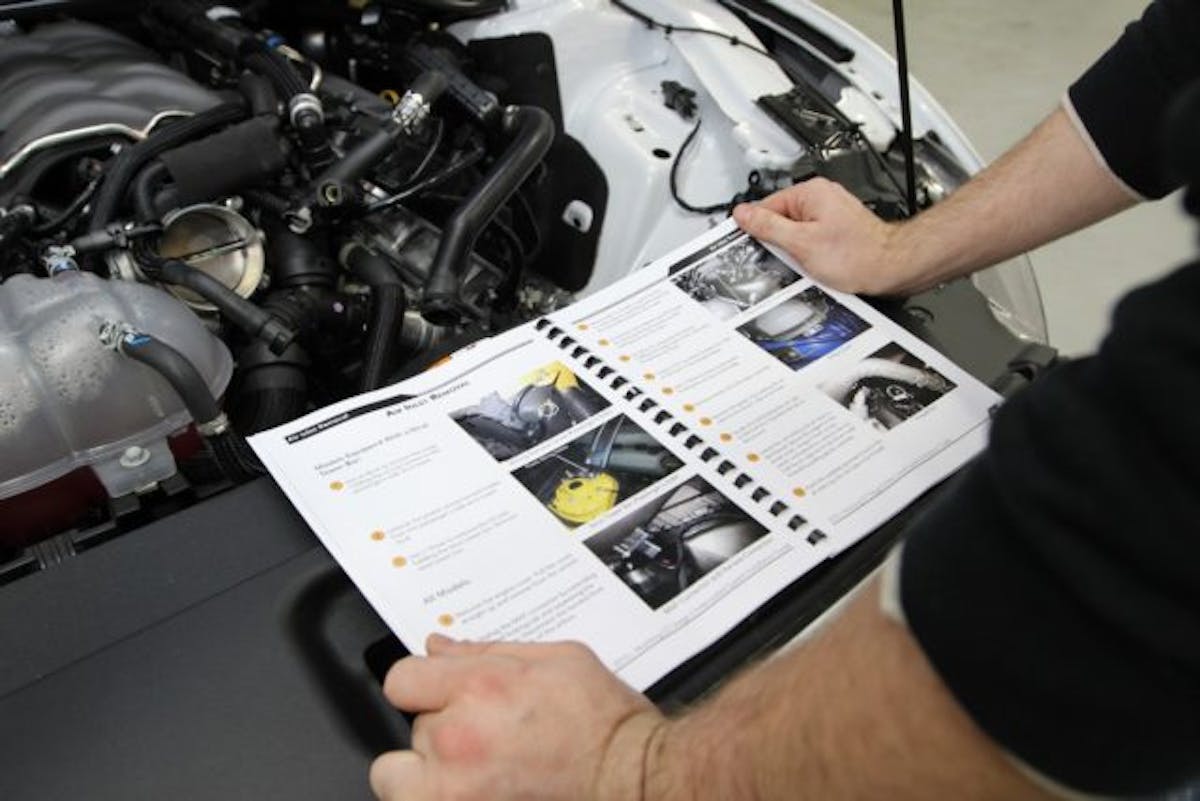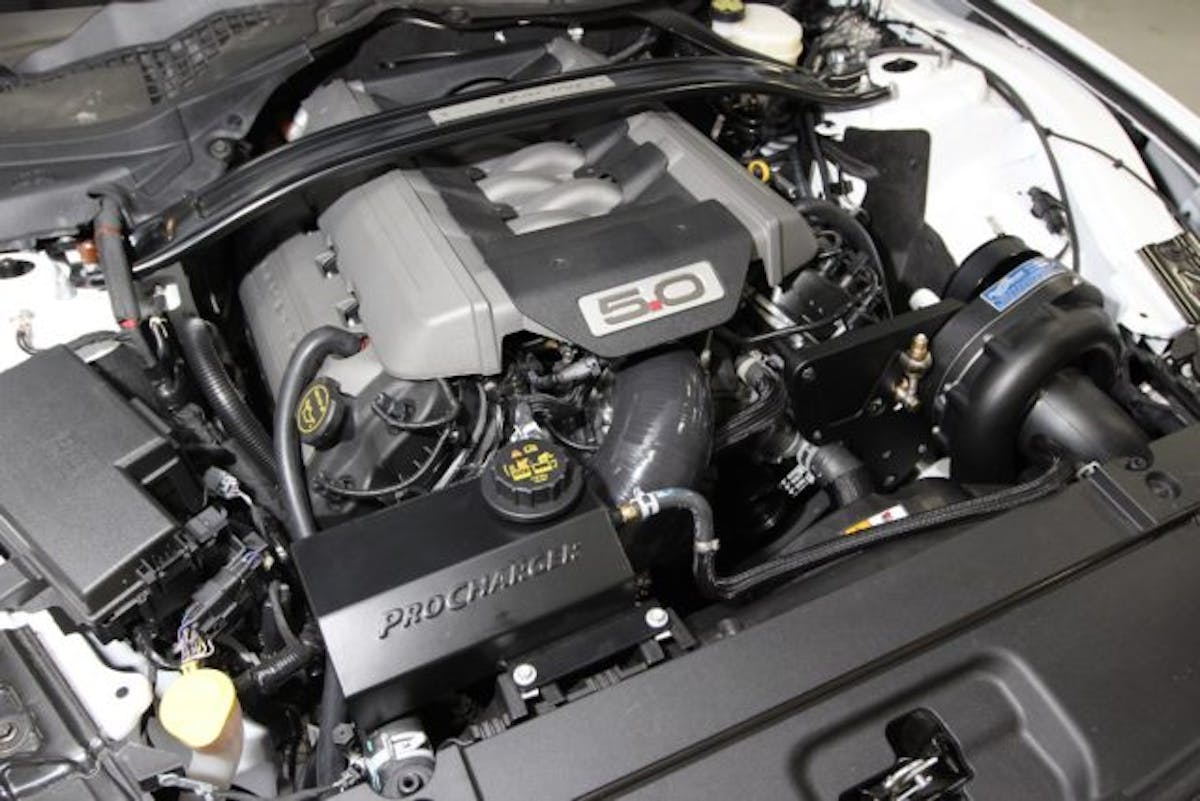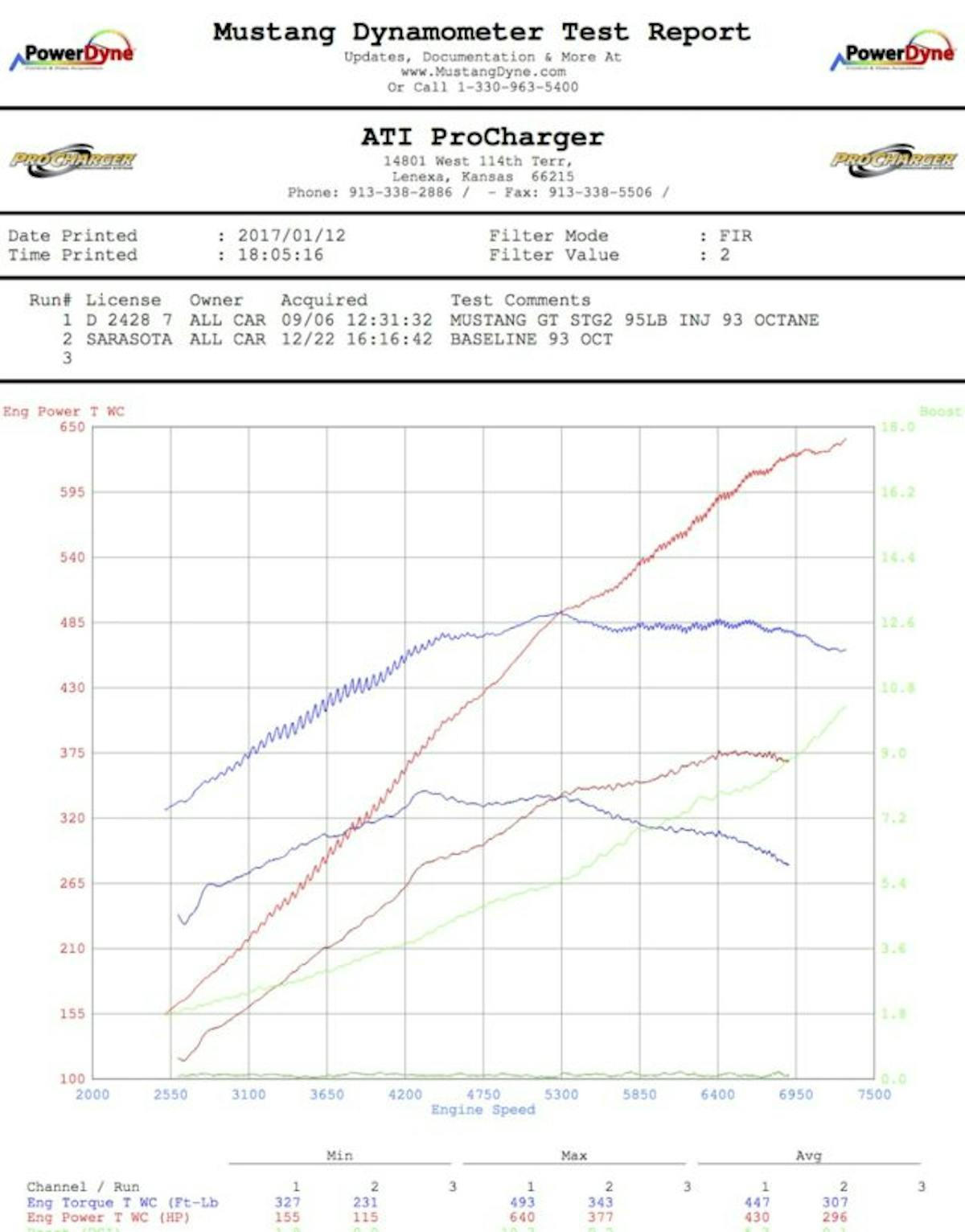
Mustangs and superchargers have always been a match made in horsepower heaven, and with the advent of fuel injection this pairing blossomed. These days it is so easy to bolt on more power with boost, especially with the inclusion of an intercooler to tame those inlet temperatures.
A pioneer in intercooled blowers for Mustangs is ProCharger and the company’s Stage 2 system for the 2015+ Mustang GT is an effective upgrade. To find out more about the installation and its results, our friend and social media/tuning/photography guru Erik Radzins recently documented the installation and testing of this system on a brand-new 2017 Mustang GT at House of Boost in Kansas City, Missouri. This demonstrated the ease of its installation and the efficacy of the system.
Required Tools
• 3⁄8-inch sockets (standard & metric)• Torx set
• Open-end wrenches (standard & metric)
• 5⁄16- Nut Driver
• Hex Allen bits (standard & metric)
• Flat screwdrivers
• Phillips screwdrivers
• Pliers
• Ford engine coolant (pink)“Being able to bolt on huge power gains at such a lower boost number makes for a super reliable, super fun boost experience for the customer. Plus, with no cutting or trimming of the car, it’s a very DIY installation that can be done at home, down to the PCM calibration that comes with the system,” Erik enthused. “Not to mention room to expand all the way to the same supercharger that powered last year’s Coyote Modified championship winning car.”
If you aren’t familiar with the ProCharger systems, they are based on the company’s stalwart P-1SC head unit and they include the brackets, intercooler, tubing, hoses and all of the hardware needed to install the system. They also include larger fuel injectors and a custom calibration delivered via an nGauge tuner. Stepping up to the Stage 2 system adds a few key upgrades for increased power.

Taking Stage
“The Stage 2 system adds a dedicated supercharger belt drive, larger 1,000-plus capable intercooler, as well as an extra pound of boost over the HO system, and a fuel pump upgrade,” Erik explained. “Obviously the boost levels can be varied for both systems with simple pulley changes, as the Stage 2 was built ready to handle even the most power-hungry boost junkies out there.”
Unless a person is running E85 or a built motor, I see no reason to upgrade from the P-1SC-1 or our new P-1X head units. – Erik Radzins, ProChargerProCharger provides a highly detailed instruction manual detailing all of the steps needed to bolt the blower on. You might be daunted, but thanks to the kit’s design and the blower’s self-contained technology, this supercharger can be installed in your garage with the tools you likely already have in your toolbox.
“We have done them as fast as six to eight hours,” Erik said. “However, a nice relaxing install taking your time should be around eight to 10 hours. No special tools are needed, just common hand tools and you can have boost!”
Better yet, the results you will see here are on a stock car with no supporting upgrades beyond those included in the kit.
Performance Prospects
“We run all of our cars here in the office in 100-percent stock form,” Erik explained. “However, if someone is going to start doing some serious time at the track with sticky tires, they may want to think about axles and a clutch upgrade. The stock auto transmissions are amazing, and don’t really need much help at all; except for those who want the wicked launch of an aftermarket torque converter.”
Supercharged Shelbys Too
 The ProCharger supercharger offerings are not limited to the latest Mustang GTs. The company also offers a similar upgrade for Ford Performance’s top-shelf Shelby GT350 and its high-revving Voodoo engine.
The ProCharger supercharger offerings are not limited to the latest Mustang GTs. The company also offers a similar upgrade for Ford Performance’s top-shelf Shelby GT350 and its high-revving Voodoo engine.
“The GT350 ProCharger Supercharger kit comes standard with DeatschWerks 95 lb/hr injectors, a fuel pump booster and a massive air-to-air intercooler,” says the company. “With head units ranging from P-1SC-1 to F-1A-94, you can be ready for bolting on up to 1,200 horsepower! Featuring a robust, CNC billet bracket design, a dedicated belt drive and an SFI approved aftermarket balancer adds up to a power-adder system you can rely on.”
This system promises to enhance a GT350’s already impressive output by an additional 175 at the crank with only 6 pounds of boost!Certainly you can ramp up the performance even more with higher octane, more boost and hardware upgrades – but the out-of-the-box performance is impressive.
“Unless a person is running E85 or a built motor, I see no reason to upgrade from the P-1SC-1 or our new P-1X head units. Both of those blowers on the Stage 2 system are capable of making way more power and boost than the stock engine could handle long-term. But, for those that have built motors, they can run all the way up to the F-1A-94 for massive power in racing applications.”
In stock form, the 2017 Mustang GT used for this testing is an automatic car with the Midwest’s finest summer 93-octane fuel in it. In stock form, this new GT baselined at 377 horsepower and 343 lb-ft of torque on ProCharger’s Mustang Dyno; and as you’ll see in the dyno graph, the ProCharger Stage 2 system delivered huge gains at the rear wheels.
“Wonder what kinda deal I can get on a 2017?” Erik joked after seeing the results. “’Cause that’s how bad I want one, personally.”
The results are definitely impressive from a bolt-on package burning pump gas. Better yet, the system is relatively simple to install. If this sounds like a good setup for your modern Coyote, you can learn more at the company’s site here.


You might also like
Giving Fox Dreams More Grip With A Complete BMR Suspension Upgrade
Project Fox Dreams is destined for a supercharged engine upgrade. To plant that power, we revamped its chassis and suspension with BMR.






































